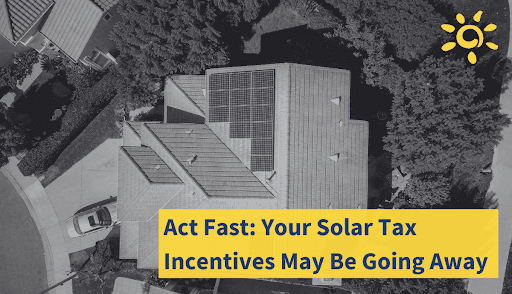Going solar has never been more affordable. Here’s how homeowners can take advantage of a generous federal tax credit. And the sooner you act—the sooner you start saving.
The Inflation Reduction Act became law in August 2022, significantly expanding the residential clean energy credit—a 30 percent federal tax incentive that reduces the amount you pay in federal taxes or it increases the amount you get back at the end of the year.
“It’s not a write-off. It’s a tax credit,” said Mark Miller, co-founder and partner at A.M. Sun Solar in Paso Robles. “There aren’t many credits out there. You get a credit for kids. And you get a credit for solar.”
For example, if you purchased a $18,000 solar system for your house and had it installed, you would qualify for a tax credit of $5,400, meaning your tax bill the following year would be lowered by $5,400.
You’ll receive a 30 percent tax break no matter what you spend buying a residential solar system. There’s no maximum amount that can be claimed.
And that’s not all—you’ll also save on electricity bills. Plus, owning your solar system raises the value of your home.
What is Covered?
The incentive covers up to 30 percent of new clean energy improvements in your home made between now and 2033, including solar, solar battery storage, fuel cells, water heaters, and wind turbines.
The solar tax credit covers the expense of the solar panels and hardware, the cost of installation and assembly, related electrical work, and solar permitting fees.
Who Can Get the Tax Credit?
The solar tax credit is only available if you buy—not lease—your solar system.
“If you’re doing a lease or a purchase power agreement, that company gets to keep the 30 percent tax credit, and you get to pay for the next 25 years,” Miller explained. “If you’re paying taxes, a purchase is always a better way to go. Even if you finance it through a loan, you own it. And usually through a loan you pay less than you would through a lease. And it makes your property worth more.”
And even if you can’t use the tax credit all in one year, it rolls forward until it is all used up!
“Say you had a $20,000 tax credit and your taxes were $12,000 this year, you can use the $8,000 the following year,” Miller added.
Why Now?
Your solar system has to be installed for you to get the tax credit.
“It’s a great time to reach out and talk to us at A.M. Sun Solar so we can get your solar system installed now, by the end of the year, so you get the tax credit right away and you don’t have to wait until 2025,” Miller said.
Here is more information about the solar tax credit, from the U.S. Department of Energy and answers to many frequently asked questions on the topic.
As always, we recommend that you talk to your accountant about all tax matters.
If you’re ready to make the switch to solar or you’re thinking about adding panels, A.M. Sun Solar offers free consultations! We are no-pressure local people with outstanding customer service. We will come out and explain all of this to you for your unique needs, for free!
Our team is waiting to talk to you about the best energy solution for your needs. Fill out the form below to schedule your FREE solar consultation!
More about A.M. Sun Solar
A.M. Sun Solar is the local leader in custom solar solutions and installations on the Central Coast. For over two decades, A.M. Sun Solar has provided high quality, cost efficient solar energy to residences and small businesses in San Luis Obispo, Monterey, and Santa Barbara counties. With a wide variety of financing solutions available, affordable pricing, custom solutions and complete installations from permit to interconnection, A.M. Sun Solar is the go-to local solar company on the Central Coast.
Connect with us today at hello@amsunsolar.com, (805) 772-6786, or fill out the form below to get a FREE on-site consultation with one of our friendly solar experts.


